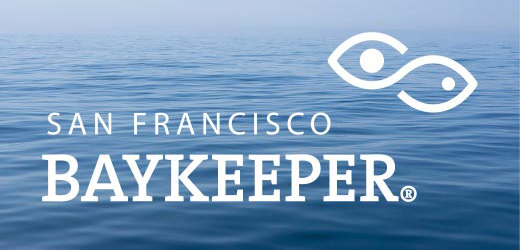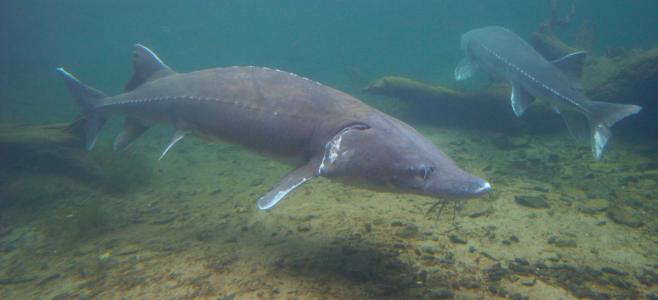Some noteworthy research findings about water quality in San Francisco Bay have recently been released in an annual publication by local scientists and regulators. Here are some highlights:
- Perfluorinated chemicals, which are used to make non-stick cookware such as Teflon and in stain-resistant fabric coatings, have been found in bird eggs in the South Bay at levels that pose a health risk. In birds, these chemicals can cause tumors, death of newly-hatched chicks, and liver toxicity, among other health problems.
- Smaller fish that forage on the margins of the Bay are even more contaminated with mercury than larger fish that are unsafe for humans to eat. This is probably due to the margins of the Bay having higher concentrations of mercury than the open water areas where the large fish forage. Some of the larger fish found in the Bay—including shiner perch, sharks, striped bass, and white sturgeon—are so contaminated that women and children are advised not to eat them at all. These fish are contaminated with both mercury and PCBs, toxic chemicals formerly used in electronics that are now banned but persist in the environment.
- Large urban estuaries generally have excessive growth of algae—but San Francisco Bay doesn’t. In most estuaries, algae growth is caused by excess nutrients from fertilizer runoff and treated municipal wastewater. Excess algae can make the water cloudy, deprive sea creatures of oxygen they need, and in extreme cases, kill fish by choking off oxygen. San Francisco Bay hasn’t had excessive algae for several reasons. Tidal mixing slows algae growth, sediments dissolved in the Bay’s water have blocked sunlight algae needs to grow, and in the past, clams have eaten lots of algae. However, since the 1990s, Bay waters have become clearer, and clams have become less abundant. The amount of one type of algae, phytoplankton, is on the rise in the Bay. Researchers are studying the trends and trying to determine if action is needed. One possible action might be changes in treatment of Bay Area municipal wastewater to remove more nitrogen, a nutrient that stimulates algae growth.
- Pollution washes into San Francisco Bay from the Sacramento and San Joaquin rivers, but Bay Area creeks and storm drains are the dominant source of a number of toxic pollutants, including mercury. Researchers are trying to identify local creeks with high levels of toxic pollutants where cleanup would have a significant positive impact on sensitive Bay shoreline ecosystems. Two likely candidates are Pulgas Creek in San Carlos and Santa Fe Channel in Richmond. The Guadalupe River, which runs through San Jose, also has a very high level of mercury, as does Walnut Creek.
These research findings, along with many more findings and forecasts of future research, are found in Regional Monitoring Program Update 2012. The report, available online and in print, is produced by the Regional Monitoring Program for Water Quality in the San Francisco Estuary, a collaborative effort between the San Francisco Bay Regional Water Quality Control Board, regulated dischargers of wastewater into the Bay, the San Francisco Estuary Institute, and other scientists and interested parties.

